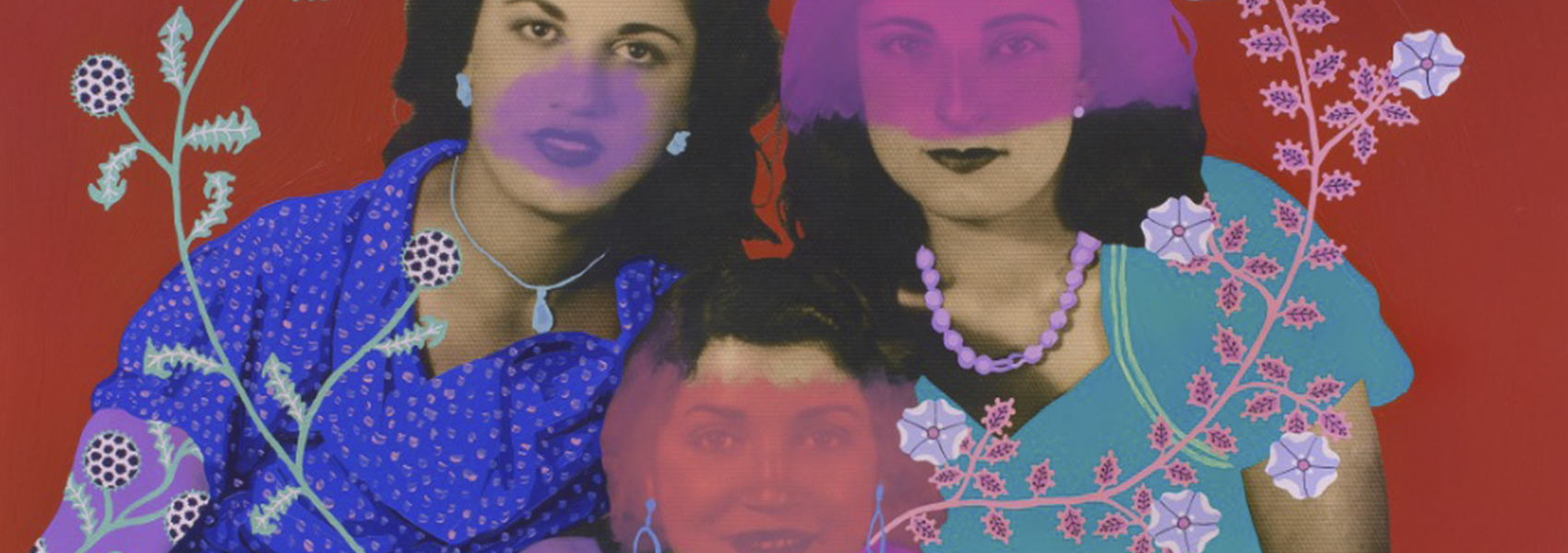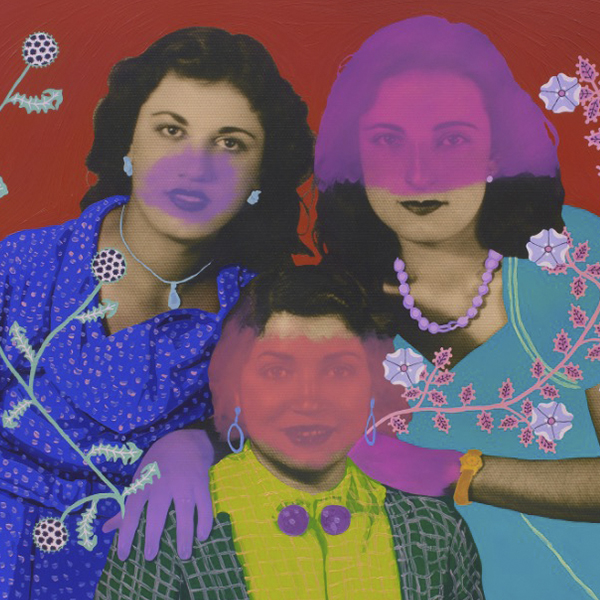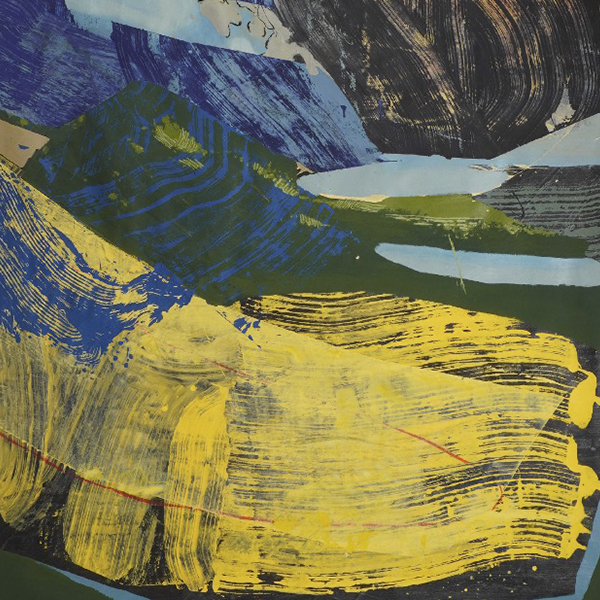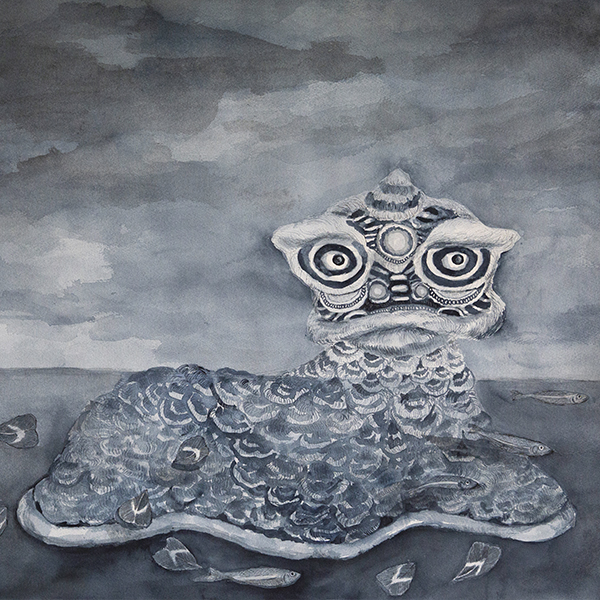Imaginary Homelands
- by Alicia Brown and Daisy Patton
- September 13 – December 4
In Imaginary Homelands, the body becomes a vessel for storytelling, exploring identity, diaspora, place, and time. Inspired by Dutch master portraiture, Alicia Brown’s gorgeously decorated figures pose as a pointed connection to the history of the Caribbean and colonialism. Patton’s focus on women from the Southwest Asia and Northern Africa region speaks to her efforts to (re)connect with Iranian culture and the interiority of women’s lives which often go unrecognized despite how they carry forward family histories.
What happens to those who leave their former homelands? These works by Brown and Patton examine how, for people in diaspora, ideas about home seldom are about a physical place, but a feeling.
“I think there’s something radical in thinking about who we remember and why,” Patton said. “Who gets to be carried forward in collective memory? And so often the people who are left behind or ignored or forgotten or erased are people who are not part of dominant groups or are not political figures.”
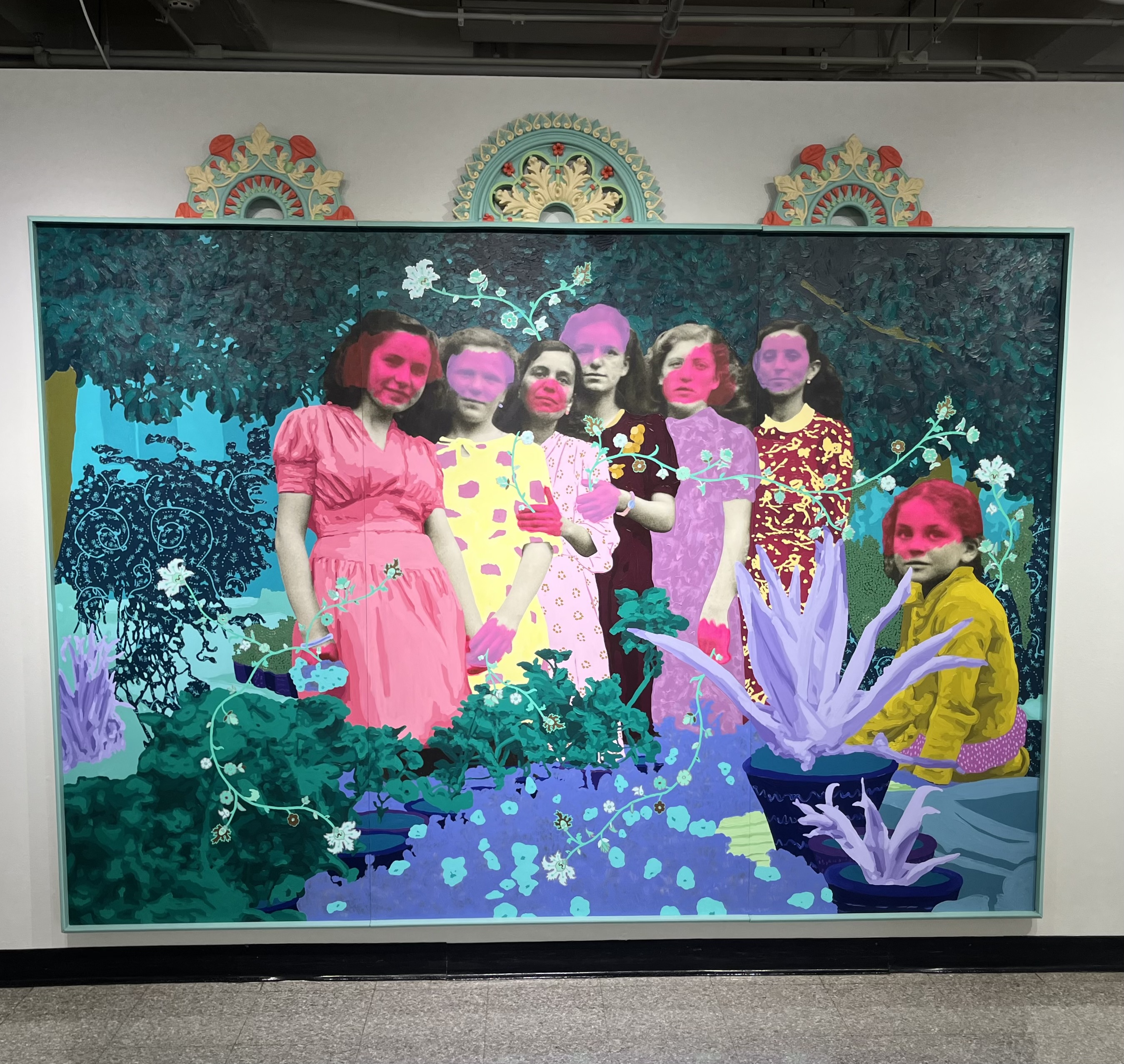
Patton’s paintings echo the ornateness found in Iranian art and architecture to attempt to slowly dissolve the imposter syndrome she felt by not growing up with her Iranian family, with the hopes of restoring and building something that can never truly be complete, never what could have been. In Brown’s work, her paintings of her family members demonstrate familial bonds and histories over time that have been preserved despite immigration and adaptation. The poignant narratives within her work takes the viewer on a journey that delves into the intersection of identity, memory, and belonging, shedding light on the intricate tapestry of a diasporic experience shaped by both nostalgia and forging of new, imaginative homelands. For both artists, belonging wholly encompasses the physical and intangible, of time, place, family, and culture.
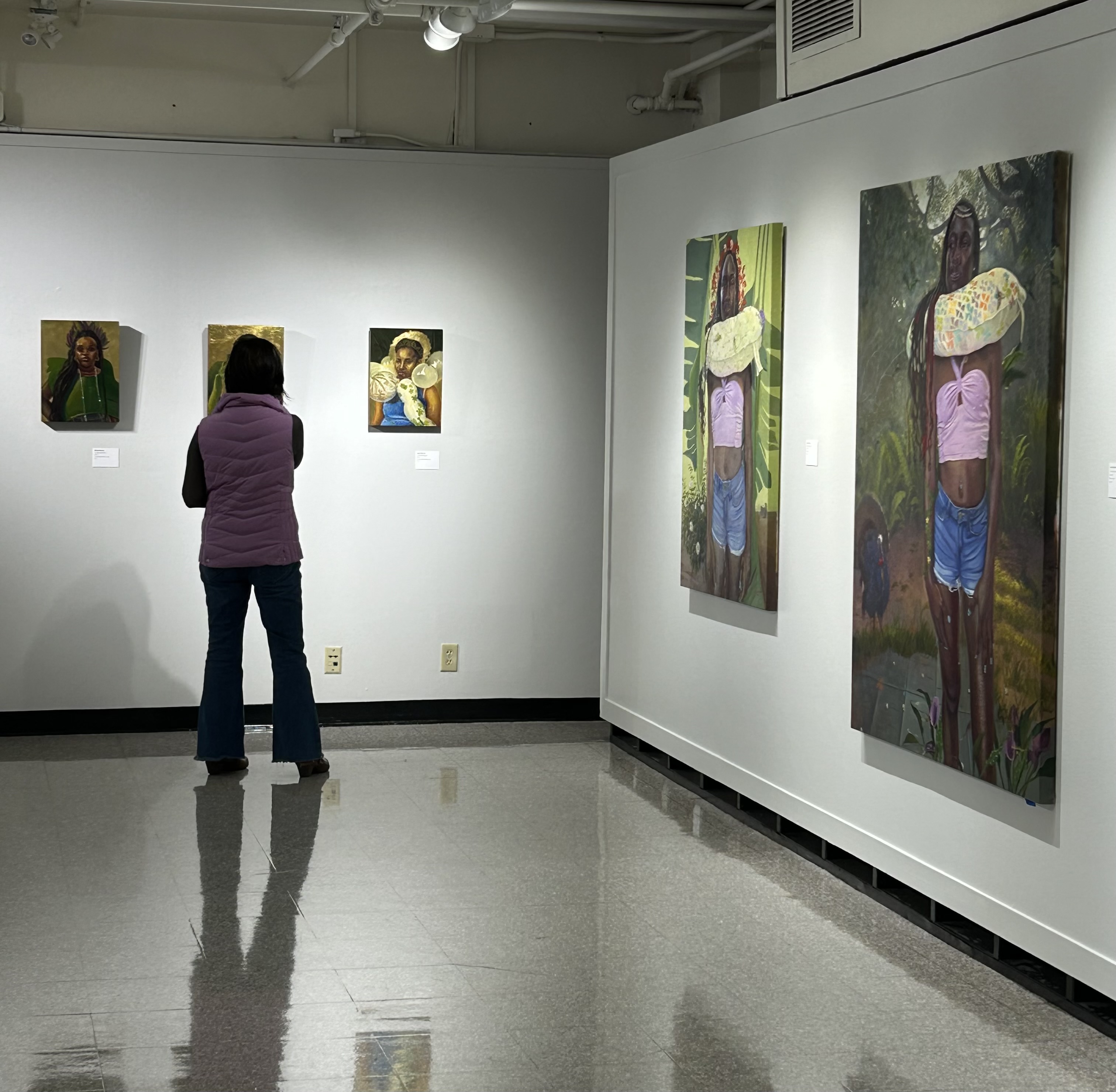
Disconnection and forgetting over time can result in a loss of self, with each artist resisting these forms of assimilation and erasure. Many migrations begin from conflict, economic or ecological disaster or even desire—the spaces these people inhabit become contested space, their bodies contested as well. Imaginary Homelands speculates what happens when those truths are acknowledged and allowed to unfurl and blossom into lineages and futures full of care and joy.
On September 13, Brown and Patton joined visitors to the gallery for an artist talk and opening reception celebrating Imaginary Homelands. And throughout the semester, the exhibition’s stunning imagery and thought-provoking themes were explored by classes from around the valley, including the Springfield High School of Science and Technology, the Clemente Course in the Humanities, Amherst-Pelham Regional High School, The Care Center in Holyoke, and, of course, UMass. In November, Patton and Brown joined Alex Callender’s painting class from Smith College on a Zoom call in which they shared insights and held a discussion with the class.
The gallery also held a community puzzle and art activity using Imaginary Homelands as inspiration. Participants created puzzle pieces representing their own personal histories, and the completed “puzzle” represented our shared past and present connections, themes also present in the exhibition.

Daisy Patton is a multi-disciplinary artist born in Los Angeles to a white mother from the American South and an Iranian father she never met. Influenced by collective and political histories, Patton explores storytelling and story-carrying, the meaning and social conventions of families, and what shapes living memory. Patton earned her MFA from the School of the Museum of Fine Arts at Tufts University, and she has a BFA honors degree in studio arts from the University of Oklahoma with minors in history and art history. Currently residing in western Massachusetts, Patton has exhibited in solo and group shows nationally, including at the CU Art Museum at the University of Colorado, the Chautauqua Institution, MCA Denver, Spring/Break NYC, the Tampa Museum of Art, the Katonah Museum of Art, The Delaware Contemporary, the International Museum of Science and Art, among others.

Alicia Brown is a Jamaican contemporary realist painter living and working in Sarasota, Florida. She works primarily with painting, and her multidisciplinary practice extends to drawings, sculptures, and installation. Referencing historical and present regimes’ influences on the “other,” Brown invites the viewer to engage with the complexities of identity, offering a thought-provoking exploration that transcends artistic and cultural boundaries. Brown holds a BFA in painting and a diploma in art education from Edna Manley College of the Visual Performing Arts, and an MFA in painting from the New York Academy of Art. Her exhibition history includes participation in the Jamaica Biennial in 2021 and 2017, Prizm Art Fair in Miami, the Victoria Gallery and Museum in London, the Wausau Museum of Contemporary Art, and the Springfield Museum of Art in the USA. Noteworthy solo exhibitions include shows at Winston Wachter Gallery in New York (2023), UUU Art Collective in Rochester, NY (2022), Virago Gallery in Seattle Washington (2019), and Studio 174 in Kingston, Jamaica (2016).
